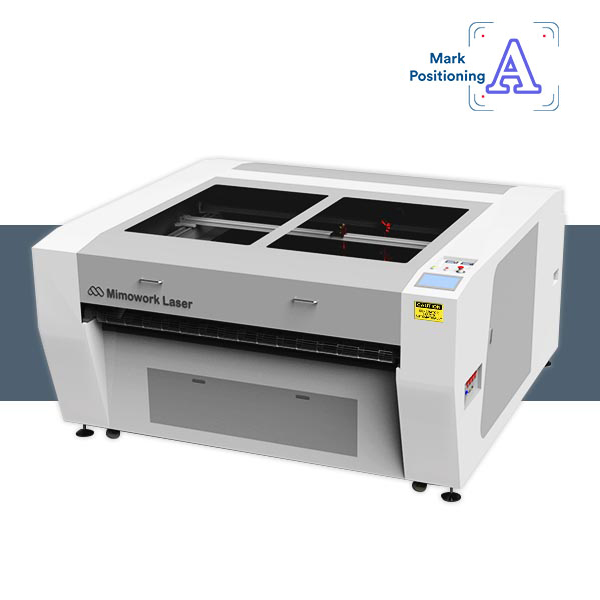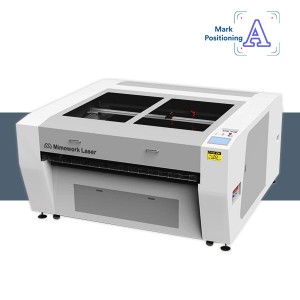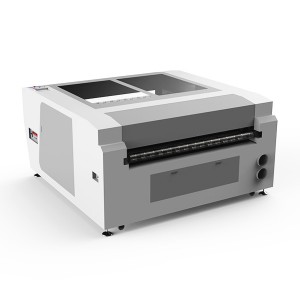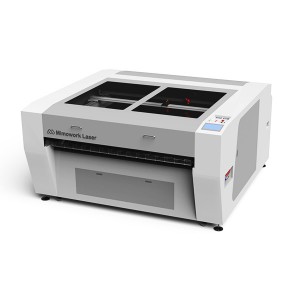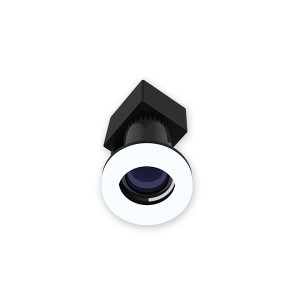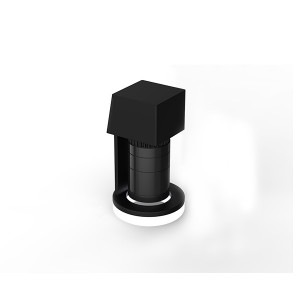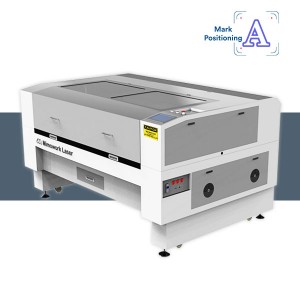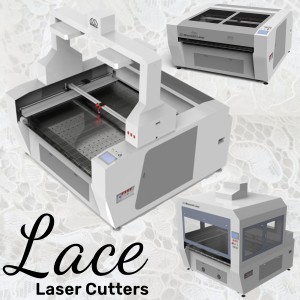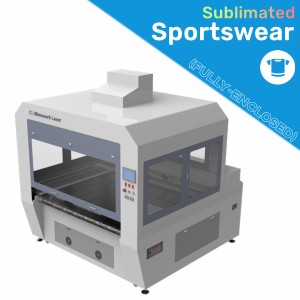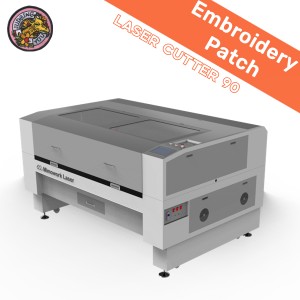Contour Laser Cutter 160
| Working Area (W *L) | 1600mm * 1,000mm (62.9’’ * 39.3’’) |
| Software | CCD Registration Software |
| Laser Power | 100W / 150W / 300W |
| Laser Source | CO2 Glass Laser Tube or CO2 RF Metal Laser Tube |
| Mechanical Control System | Step Motor Drive & Belt Control |
| Working Table | Mild Steel Conveyor Working Table |
| Max Speed | 1~400mm/s |
| Acceleration Speed | 1000~4000mm/s2 |
Advantages of Contour Cutter Laser Machine 160
Larger format, Wider applications
◉ Sublimation laser cutting for flexible materials like sublimation fabric and garment accessories
◉ Enhanced two laser heads, greatly increase your productivity (optional)
◉ CNC (Computer Numerical Control) and computer data support high automation processing and constant stable high-quality output
◉ MimoWork Smart Vision Laser Cutter Software automatically corrects deformation and deviation
◉ Auto-feeder provides automatic & fast feeding, allowing unattended operation which saves your labor cost, lower rejection rate (optional)
Highlights of the Vision Laser Cutting Machine
Stainless steel web will be suitable for flexible materials like direct injection and digitally printed fabrics. With the Conveyor Table, continuously process can be easily realized, greatly increasing your productivity.
The CCD Camera equipped next to the laser head can detect feature marks to locate the printed, embroidered, or woven patterns and the software will apply the cutting file to the actual pattern with 0.001mm accuracy to ensure the highest precious cutting result.

Optional Servo Motor
Servo motor motion system can be selected to provide a higher cutting speed. Servo motor will improve the stable performance of C160 when cutting complex outer contour graphics.
Laser Cut Heat Transfer Film for Apparel Accessories
Fabric Cutting Machine | Buy Laser or CNC Knife Cutter?
Find more videos about our laser cutters at our Video Gallery
Fields of Application
Polished edge and accurate contour cutting
✔ The CCD Camera accurately locate the registration marks
✔ Optional dual laser heads can greatly increase the output and efficiency
✔ Clean and accurate cutting edge without post-trimming
Precision and Flexibility
✔ Cut along the press contours after detecting the mark points
✔ Laser cutting machine is suitable for both short-run production and mass production orders
✔ High Precision within 0.1 mm error range
of Contour Laser Cutter 160
Materials: Twill, Velvet, Velcro, Nylon, Polyester, Film, Foil, and other patterned materials
Applications: Apparel, Clothing Accessories, Lace, Home Textiles, Photo Frame, Labels, Sticker, Applique
Comparison between Knife and Laser Cutting
When discussing flatbed knife cutters, they initially guide the knife through dense substrates like banners and other thick soft signage. This method is effective for materials with substantial thickness.
Pros & Cons: Knife Cutting
Problematic Flexibility
However, this technique becomes problematic when dealing with flexible sportswear garments, especially considering the stretchability of materials like Spandex, Lycra, and Elastin.
The drag knife tends to pull and distort such fabrics instantly, causing plies and deformations. Consequently, a flatbed knife cutter is not a suitable choice for sportswear and delicate materials.
On the contrary, a flatbed knife cutter excels in cutting pieces of cotton, denim, and other thicker natural fibers. Although the manual cutting process can be cumbersome, it proves effective for cutting various fabric types.
Pros & Cons: Laser Cutting
Precision and Flexibility
The laser system emerges as the ideal solution for cutting polyester sportswear and soft signage. However, laser cutting may not be the optimal choice for natural fibers, as it leaves a slight burn mark on the fabric's edge.
While this is inconsequential if the fabric requires seaming, it becomes noticeable in a clean-cut scenario. Traditional laser cutters often result in burned edges characterized by heat and lingering fumes, leading to small melt bubbles along the cut.
MimoWork Laser cutting systems have effectively addressed this issue through a proprietary solution. The development of a specialized vacuum suction system at the MimoWork laser cutting head, combined with a robust vacuum extraction system, works to minimize or eliminate this problem.
While soft signage customers may not find this issue concerning, it poses a challenge for sportswear customers who would prefer to avoid melted bubbles.
Consequently, MimoWork has dedicated efforts to ensure a flawless cut without any residual melting. This is achieved by swiftly eliminating all fumes released during cutting, preventing them from affecting the color of polyester fabric.
Simultaneously, the MimoWork system prevents floating ashes from the burn from re-entering the fabric, which could otherwise leave a yellowish tint. The MimoWork fume extraction system guarantees no coloration and no melt residue along the fabric edge.


